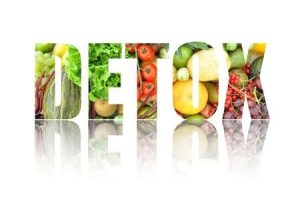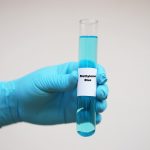
The purpose of this article is two-fold, first to review the fact that we live in a toxic environment and that fat cells are used as a repository for toxins; second to understand the need for detoxification in order to sustain homeostasis, i.e. health. One of the biggest misnomers is that an athlete who trains and burns thousands of calories on a daily basis can be indiscriminate on the calories they allow to enter their bodies, that is calories from hormone and antibiotic treated meats, food cooked in plastics, genetically modified foods and the like. Such thinking will lead to cellular death and all disease begins at the cellular level. Remember Roy Jones’ (champion boxer) statement, ‘I will not let any bad thing enter my body’. Therefore to follow are excerpts from my previous articles along with an understanding of the proper way to detox the body, leading the cellular heath and in turn to overall health.
Energy within the body, the ability to perform, to function, to live, where is its origin? Biochemically it comes from Adenosine triphosphate (ATP). Where is ATP manufactured? It is manufactured within a cells organelle known as the mitochondria. The manufacturing process within the mitochondria starts with the Citric Acid cycle, a complex biochemical production enzymes, election transport, substrates that generate Acetyl-CoA, the entry molecule for the Citric Acid cycle. The biochemistry of the Citric Acid cycle is structured under oxidative phosphorylation, electron transport, chemiosmotic gradient, ATP synthase, beta oxidation.1
The feeding of the Citric Acid Cycle is a basic, nutritional approach to ensuring that the components of energy production are available. The Citric Acid Cycle is dependent upon :
- Vitamins: B-1, B-2, B-3, B-5, C, D3, E
- Proteins:carnitine, Cysteine, Tryptophan, Glutamine, Histidine, Glutamic acid, Valine, Isoleucine, Methionine, Proline, Tyrosine, Phenylalanine, etc.
- Mineral: Iron, magnesium, Zinc, Phosphorus, Manganese, Sulfur, Potassium, Sodium, Selenium
- Nutrients: Lipoid Acid, CoEnzyme Q10, Alpha Ketogluterate1
The energy production within the mitochondria becomes impaired if cell damage occurs. Cellular damage originates with inflammation of the cells surface, which results from the exposure to xenobiotics, improper nutrition, oxidative stress. When this happens, meaning low energy one is likely to jump start with an energy drink, which only compounds the problem and does not address the root cause of depleted energy.

Before presenting renowned detoxification protocols let’s have a refresher on my previous articles that defined xenobiotics and thebody’s defense mechanism to capture the toxicants.
The following is an excerpt from my article entitled, Challenges to a Healthy Life Style Causes – Exposure to Xenobiotics, Additives to Foods, Side Effects of Pharmaceuticals2:
“Your body’s innate intelligence is designed to remove substances that are of no physiological worth. However, no two people are alike respective to symptom, cause or recovery. Any symptom can be the manifestation of chemical sensitivity with any target organ being vulnerable. Genetic polymorphism means we look different from each other on the outside; however, we are biochemically and genetically unique on the inside. There is a genetic predisposition for some individuals for failure, based on the absence of necessary enzymes. For example, inborn errors like phenylkentonuria – the enzyme that is necessary to metabolize phenylalanine is missing, causing the amino acid to build up causing death. Another example is the absence of aryl hydroxylase hydratase (AHH) causing the inability to detox debrisoquine (antimalarial drug) that leads to Parkinson disease.
In addition to inborn deficiencies to our enzyme network, there is enzyme depletion caused by continued exposure to toxins, commonly known as xenobiotics which are common to our food and environment. What is a xenobiotic? A xenobiotic is a foreign chemical substance found within an organism that is not normally naturally produced by or expected to be present within that organism. Xenobiotics will engulf metabolic pathways containing necessary enzymes to detoxify the material. Competition for these enzymes will lead to back up of toxins which in turn attack proteins and other enzymes, leading to cell death, followed by organ death, leading to system death and overall death.
Enzyme deficiencies and/or depletion will lead to six (6) physiological stages that cascade with one another leading to disease. (1) Spreading Phenomenon means that individuals become reactive to xenobiotics that never before bothered them. For example, brain fog resulting from exposure to pesticides. The allopathic community will treat brain fog while completely missing neurological and endocrine damage related to the original exposure/dysfunction. (2) Adaptation involves the endoplasmic reticulum. Within the cell membrane there is a chain of molecules known as Cytochrome P-450. These chemical groupings attach to the xenobiotics to increase size, polarity and solubility. This alteration of the xenobiotic will allow them to be dragged from the body through our excretory pathways. However, this enzyme network will become depleted when the body is overwhelmed with continued exposure to xenobiotics, leading to a build up of toxins. (3) Certain toxins will cause enzyme induction which involves energy expenditure. The need for more enzymes means that the body does not react as it first did causing a greater load of the toxin to exhibit the same symptom. The increase in energy expenditure causes imbalances to homeostasis. In other words, there becomes a lack of innate energy needed to carry out normal physiological functions. (4) De-adaptation is when xenobiotics will overwhelm the detox-enzymatic pathways. Not completely metabolized, the xenobiotic will cause a symptom that was never before elicited. For example, glutathione is used in detoxification and requires the amino acids cysteine and lysine. Too much disappearance of glutathione with cysteine leads to reduction in taurine. The disappearance of taurine is associated to recalcitrant conditions of inflammation, infection and heart problems. (5) Bipolarity, which means the toxin will first cause stimulation, then depression. For example, alcohol may lead to an excitement reaction, but when it is metabolized to the aldehyde depression occurs. Finally, (6) the Switch Phenomenon that causes the physician to be stumped because upon exposure to the xenobiotic the affected target organ switches from one to another. For example, an asthmatic person developing cardiac abnormalities or irritable bowel syndrome (IBS), meaning one disease becomes active while the other is quiescent.
There are three (3) categories of substances that lead to physiologic impact: (1) work and environmental toxins, (2) food additives, such as preservatives, color and taste additives; and (3) pharmaceuticals.
Environmental toxicants include: plasticizers (TMA, Trimellic anhydride) which are complex antigens that impact the immune system; dry cleaning fluids that are cardio toxins; solvents which are associated with panic disorders; hydrocarbons (paint solvents, gasoline, and the like) that cause glomerulonephritis (inflammation of the kidney cortex); formaldehyde linked to fatigue and cancer; pesticides linked to brain fog (loss of concentration, poor memory, irritability and depression).
The Department of Labor’s Occupational Safety and Health Administration and the Environmental Protection Agency establish safe exposure limits to chemicals found in the work place and environment, respectively. However, always inform your physician of your occupational and environmental histories.
In the category of food there is celiac disease linked to wheat intolerance (gluten); retinal degeneration linked to MSG (monosodium glutamate); milk may contain r[Bovine Growth Hormone] that causes hypochlorhydria; and/or one’s diet that includes the inappropriate combination of protein, carbohydrates and sugars, which will lead to fermentation of carbohydrates and putrefaction of proteins, causing catarrh to infiltrate the extracellular fluid.
Regarding food additives, food manufacturers have added Advanced Glycation End Products (AGE) to foods, especially in the last 50 years as flavor enhancers and colorants to improve appearance. Biomolecules function through glycosylation which occurs at defined target molecule sites. However, glycation (non-enzyme glycosylation) is the result of sugar molecule, such as fructose or glucose bonding to a protein or lipid molecule without the controlling action of an enzyme. Glycation can occur inside the body (endogenous Glycation) or outside the body (exogenous Glycation). Glycation is a haphazard process that impairs the functioning of biomolecules.
Exogenous Glycation may also be referred as dietary or preformed when sugars are cooked with proteins or fats at temperatures of 120o C (~248o F). For example, glycation results when sugars are added to products such as french fries to enhance browning. Glycation will contribute to the formation of acrylamide, a known carcinogen. AGE contribute to inflammation, retinal dysfunction, cardiovascular disease, type II diabetes. Foods with significant browning, carmelization or with directly added AGEs are proinflammatory and disease initiating compounds. Examples include donuts, barbecued meats, cake and dark colored soda pop.
Endogenous glycation occurs in the blood stream to a small proportion of absorbed simple sugars: glucose, fructose, and galactose. Fructose and galactose have ten times the glycation activity of glucose. AGEs are more reactive than the sugars they are derived from, and are implicated in many age-related chronic diseases such as:
-
Type I and II diabetes (beta cell damage)
-
Cardiovascular disease (endothelial, fibrinogen, and collagen are damaged)
-
Alzheimer’s (amyloidal proteins are side-products of reactions progressing to AGEs
When xenobiotics overwhelm certain detoxification pathways, then they cannot be handled in the original way designed for their detoxification. What happens is that they are not completely metabolized. In other words the individual may react to a chemical that never before bothered them. When symptoms are suppressed by drugs the actual cause is not sought out, and the patient may develop other symptoms related to the original dysfunction. The allopathic physician is thus baffled as one symptom is suppressed and a new symptom emerges, possibly related to a different target organ…In other words the physician begins to doubt motive or begins to suspect sanity of the patient.
Check back for Part 2!
Resources:
1Dr. Jack Tips, Research paper # 8. Mitochondrial Biogenesis. 2012
2Brancato, DJ. Challenges to a Healthy Life Style. Causes – Exposure to Xenobiotics, Additives to Foods, Side Effects of Pharmaceuticals. NFPT Trainer Pulse, March 2015
3Brancato, DJ. The Body’s Protective Role Against Xenobiotics. NFPT Trainer Pulse, May 2015.
4Lourie,B. Smith, R. Toxin, Toxout. St. Martin’s Press, N.Y., N.Y. 2013. [Adapted from S. Genuis, “Elimination of Persistent Toxicants from the Human Body,” Human and Experimental Toxicology 30 (2011):3-18].
5 Colbert, Don. Toxic Relief, RestoreHealth and Energy through Fasting and Detoxification.Siloam Press, Lake Mary, FL. 2001.
6Walker, NW. Fresh Vegetable and Fruit Juices, What’s Missing in Your Body. Norwalk Press, Prescott, AZ. Published annually since 1936.






